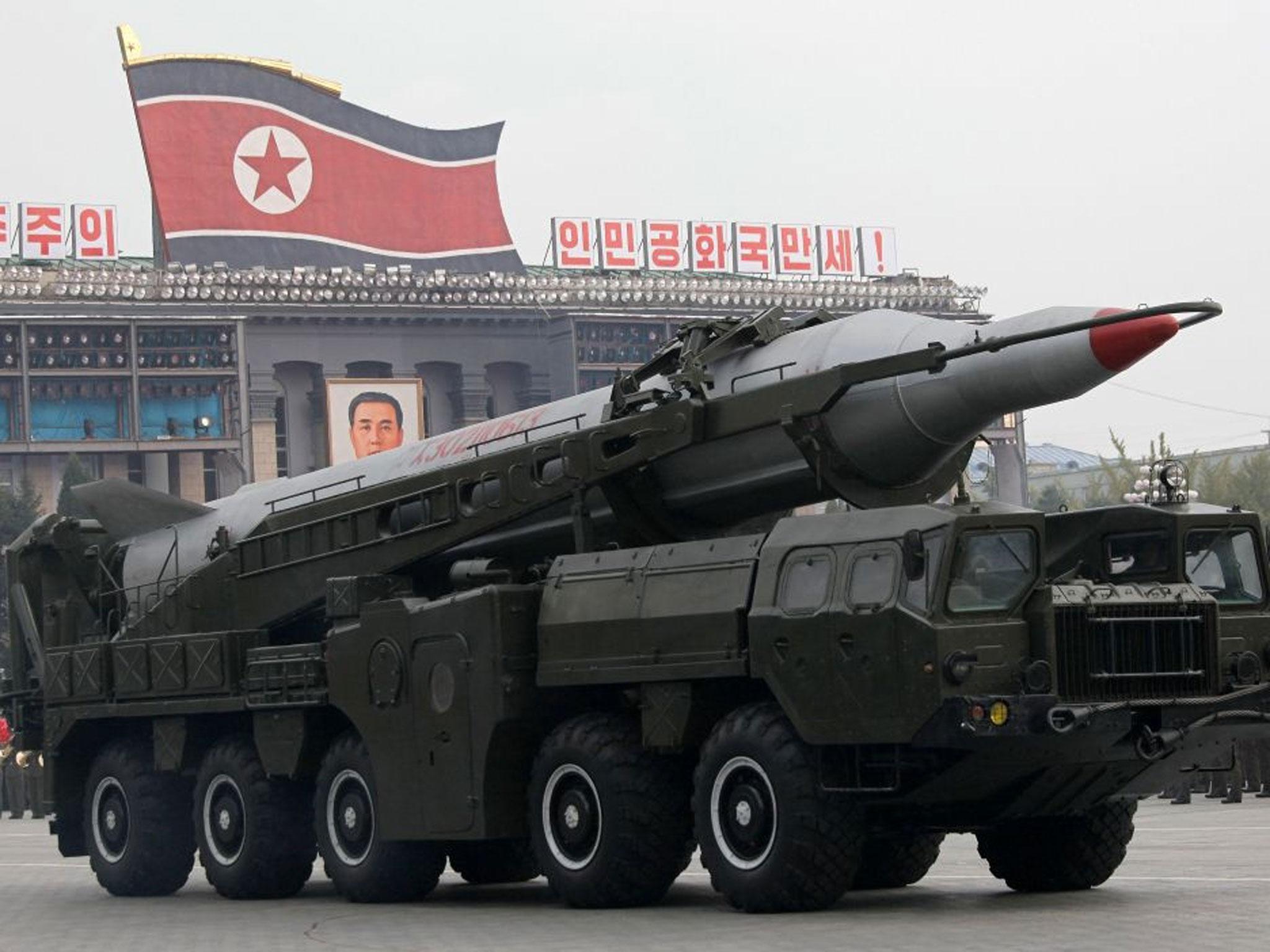North Korea has '1,000 ballistic missiles' that can reach Japan and South Korea, study suggests
But the hermit kingdom will need foreign help to create ranging missiles that could target the US

North Korea is armed with hundreds of ballistic missiles which have the potential to hit neighbouring countries, researchers have warned.
According to a US study investigating what the hermit kingdom's nuclear capabilities will look like by 2020, North Korea will need foreign technology in order to upgrade its arsenal and pose a direct threat to Washington.
The nation’s aggressive rhetoric and periodic missile tests have made other nations in the region nervous, as negotiations to persuade it to disarm remain unlikely.
Just last week, North Korea's military fired seven missiles into the sea as US and South Korean forces performed military exercises off its coastline, according to Seoul officials.
The research was published by the North Korean Futures Project – a joint effort by the U.S.-Korea Institute at John Hopkins School of Advanced International Studies and National Defense University's Centre for the Study of Weapons of Mass Destruction.
It concluded that North Korea’s inventory of around 1,000 missiles, based on old Soviet technology, can already reach most targets in South Korea and Japan.
North Korea: In pictures
Show all 14Aerospace engineer John Schilling and a research associate at the institute, Henry Kan, explained in the paper that: "North Korea has already achieved a level of delivery system development that will allow it to establish itself as a small nuclear power in the coming years."
It goes on to explain that Pyongyang may already be able to field a limited number of long-range Taepodong missiles in an emergency, but they would be unreliable, vulnerable to pre-emptive strike and inaccurate.
But by 2020, the long-range KN-08 missile, which the US are particularly concerned by, may achieve "emergency operational status", with very limited flight testing.
However, remains on help from other nations to develop better missiles. This process would involve progress on high-performance engines, heat shields, guidance electronics and rocket motors that use solid fuel instead of liquid fuel, the document reads.
And while the prospect of foreign assistance has become less likely as North Korea's international isolation has intensified since its first nuclear test explosion in 2006, this attitude has not hindered its nuclear programme.
According to a recent estimate by the Washington-based Institute for Science and International Security, the nation is believed to has enough fissile material for at least 10 weapons - a figure which could increase to between 20 and 100 weapons by 2020.
US military officials have expressed growing concern about North Korea's capabilities.
Defence Secretary Ash Carter will visit Japan and South Korea this week amid speculation that Washington wants to place a missile defence system in South Korea against North Korean ballistic missiles.
Additional reporting by AP
Subscribe to Independent Premium to bookmark this article
Want to bookmark your favourite articles and stories to read or reference later? Start your Independent Premium subscription today.

Join our commenting forum
Join thought-provoking conversations, follow other Independent readers and see their replies